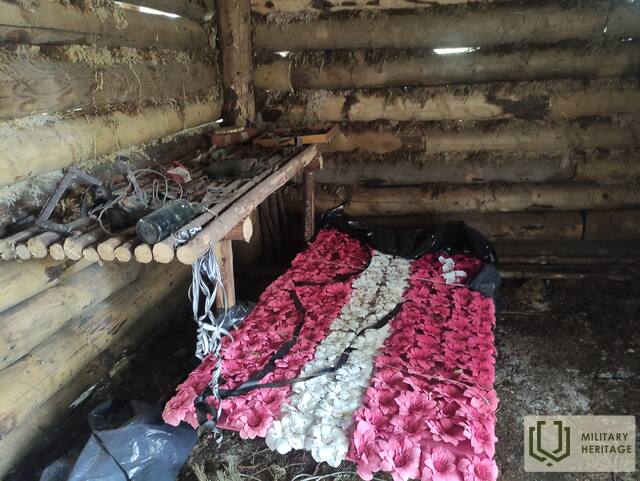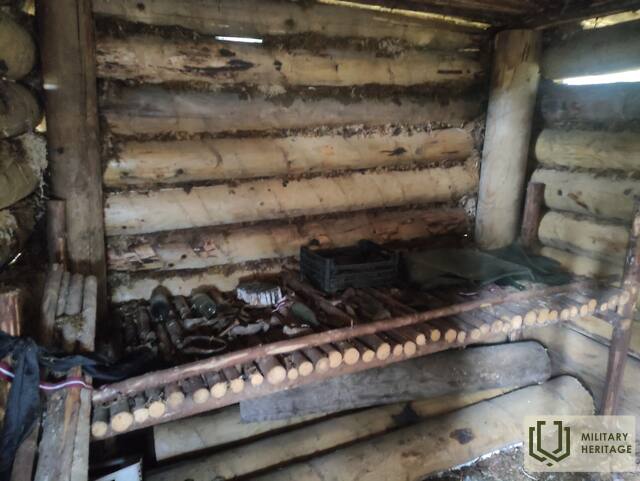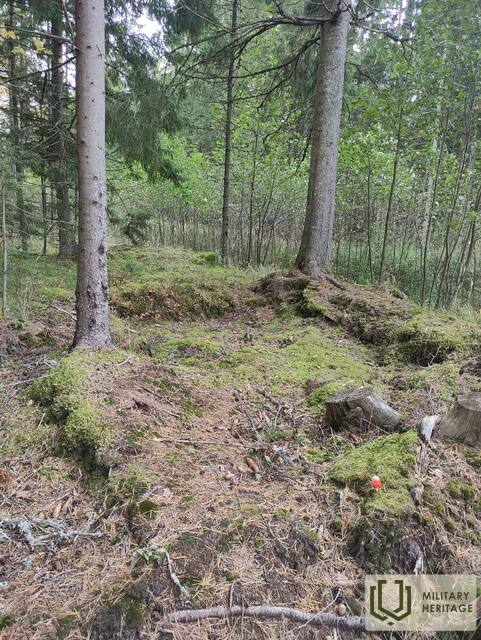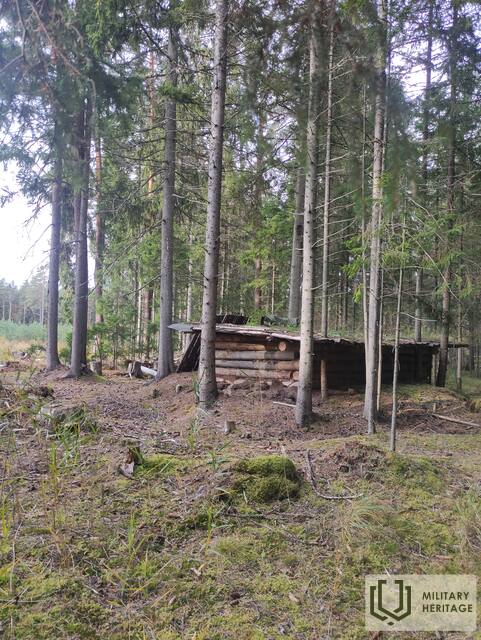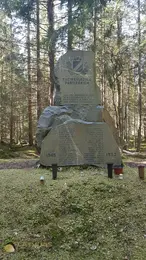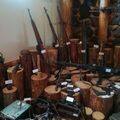The Battle of Dzelzkalni in the Zūri Forest on February 23, 1946
The winter of 1945/46, the Brass Group spent in the Zūri forest in the Dzelzkalni area, where several bunkers had been built. Approximately 40 partisans lived there. On February 23, 1946, the camp was surrounded by the USSR Internal Affairs troops and a fierce battle took place.
In the Dzelzkalni area of the Zūri forest, several bunkers were built for the national partisan Misiņš group. Approximately 40 partisans lived there. At that time, the group published its own newspaper “Kurbads”, edited by former war correspondent Pēteris Arvīds Šāvējs.
On February 23, 1946, the camp was surrounded by the USSR internal affairs troops. When the group fought its way out of the siege, eight partisans fell. (As the group's then-contactor Tālivaldis Bāliņš says, six of the fallen remained at the battle site, while two were taken away by the Chekists and buried in an unknown location. However, according to the gravestones installed on the graves at the Dzelzkalni Brothers' Cemetery, seven of those who fell on February 23 are currently buried there.) The rest of the group managed to break out of the siege by destroying two communist machine gun crews, which were supposed to cut off the possible partisan retreat route. After that, the group split up, with part of them heading to the Kabile forests, two partisans to Ventspils, and the rest, after crossing the Ventspils-Riga highway and the Rinda River, reaching Puzes Bētmeji.
Lieutenant Colonel Rūdolfs Opmanis, 3rd year student of the Agricultural Academy Pēteris Šāvējs, electrical engineer Jānis Sēkliņš, 3rd year student of the Faculty of Medicine Lūdolfs Kļava, graduate of the Commercial School Alfrēds Grāvelsiņš, student forester Bruno Auers, graduate of the Faculty of Law Maksis Ķierpe and Roberts Krastiņš fell in the battle of February 23. Six of them were buried there in the spring of 1946 by partisan supporters in the same place, in the Vārnu village. The burial site of the fallen partisans was repeatedly marked by Ugalian Imants Kalnenieks throughout the years of occupation.
Latvian soldiers' cemeteries and memorial sites: Ugāle parish, national partisan brothers' cemetery near Dzelzkalnie (karavirukapi.blogspot.com)
Related timeline
Related topics
Related objects
Grave of the National Partisans "Dzelzkalni" Brothers
A monument to the memory of national partisans has been erected in the cemetery. The names of the partisans who served in the Puze-Piltene partisan group are carved into the stone. The granite slab at the foot of the monument has the numbers of the year (1945-1953) and the names of 36 fallen partisans engraved on it.
On February 23, 1946, a bloody battle took place in Tārgale parish near Vārnuvalkas between the Latvian national partisan group led by commander Brīvnieks at their camp site and the destroyer unit of the Soviet occupation army. Six partisans fell in the battle, who were secretly buried by local residents in the forest there. Later, two more who were shot were buried there without trial or sentence. Locally, this corner of the forest was called the Dzelzkalns Cemetery, which for many years only connoisseurs were able to find – by the sign of the cross in the spruce.
In the summer of 1989, members of the Ugāle branch of the Latvian National Liberation Army (LNNK) placed birch crosses at the national burial site of the Puze-Piltene group of those who fell on February 23, 1946, in the Dzelzkalni area of the Zūri forest, and searched for relatives of the fallen in Latvia and abroad.
On April 27, 1991, with the participation of relatives of the fallen and representatives of national organizations from several countries, the graves were consecrated by theology professor Roberts Akmentiņš, and they were named the Dzelzkalni Brothers' Graves.
Museum of the National Resistance Movement in Renda
The museum is located a few kilometres from the centre of Renda parish. The exhibit tells about the 50-year-long resistance movement in Latvia: resistance to the first Soviet occupation, resistance to the Nazi German occupation, and the armed and non-violent resistance to the Soviet occupation. The exhibit is located in two buildings. The first building houses evidence of the first Soviet occupation and German occupation. The exhibit showcases a restored barn building where the focus lies on the National Partisan War. Between the two buildings there is a bunker with an authentic layout and trenches used by soldiers. Located near the museum in Renda, excavations, blindages and an obstacle course serve as a training ground for youth guards and anyone interested. Visits must be booked in advance.
One of the largest battles of the national partisans, called the Āpūznieki Battle, took place in January 1946 not far from here. The battle saw the Kabile National Partisan Group overpower much larger forces of the occupying power. Featuring information stands, the battle site is now home to a rest area.




